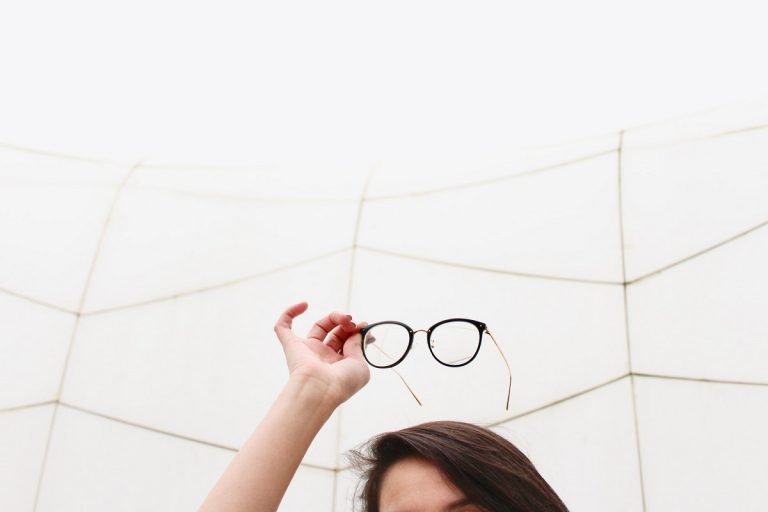Monuments, society, and people

Aparajita is currently doing her PhD in Visual Arts, Arts and Aesthetics at JNU. She is a trained archaeologist and has participated in exacavations at Rakhigarhi,Haryana and Odhisa. Her main area of interest is study of Ancient Indian history and culture.
One of my most favourite songs from the movie Guide Aaj Phir Jeene Ki Tamanna Hai, starring Dev Anand and Waheeda Rehman, was shot at the Chittorgarh fort. The beautiful chase sequence of the song “Oh mere Raja” from Johny Mere Naam was picturised against the backdrop of Nalanda. The immortal song of Dil ka Bhavar Kare Pukar takes the audience inside the Qutub Minar. The song was shot in a small section inside the Mahal, but it definitely gives us a good idea of what the monument looks like from inside. The iconic song from Aandhi, “Tere Bina Zindagi,” was shot at the ruins of Avantipur, located at Kashmir. The ruins of the heritage considerably add to the aesthetic setting of the song and give the song its necessary meaning. The ruins emphasize the fact expressed through the song that without a partner’s love, life is nothing but a mere ruin.
Bollywood movies have always included iconic places around the world in their films. Different landscapes and locations have often been a matter of attraction for Bollywood. Both in old and new movies, songs have chosen monuments as a backdrop to express their emotions. The cringe-worthy songs from the movie Rowdy Rathod are shot at Hampi. The elegance of the shore temple in Mahabalipuram was captured beautifully in 2 States. Some of these depictions have been iconic and have caught the attention of the audience. Thus, monuments today have assumed a pivotal role. They are an intrinsic part of our local cultural heritage. The Amer fort in Khoobsurat, Jal Mahal in Shuddh Desi Romance, Jaisalmer in Hum Dil De Chuke Sanam, Humanyun Fort in Mere Brother ki Dulhan, and the iconic Aguada Fort we see in Dil Chahta Hai have unknowingly become a part of our bucket list. Over the years, directors have gone beyond using monuments as mere props, and movies like Gulabo Sitabo, Masan, and Piku are such shining examples. These films reflect the rich heritage of the city and portray the nuances of our culture and language. The monuments are thus increasingly becoming a part of Bollywood, wherein it has become a way of depicting angst and aspiration and is used as a mark of identification. We can only expect Bollywood to continue its alliance with monuments, which helps us to promote our culture.
Monuments in India
Archaeological Survey of India (ASI) is the premier agency in India which looks after the protection of monuments as Sites of national importance. There are, at present, 3650 heritage sites and monuments under the protection of ASI. The monuments and sites are preserved through various circles of ASI spread across the country. The circles look after the conservation, protection, and documentation of monuments in the region. The protection of monuments and sites in India is governed by the Ancient Monuments and Archaeological Sites and Remains Act, 1985.
According to the Act, Ancient Monument is defined as any structure, monument, cave, rock-sculpture, inscription, or monolith which is of historical, archaeological, or artistic interest and which has been in existence for not less than 100 years. The Act, apart from defining the categories of monuments, has been instrumental in laying down norms that help in the protection of the monuments.
Recently, the Ancient Monuments and Archaeological Sites and Remains Amendment Bill 2017 was introduced in Lok Sabha, which proposed an amendment to the existing Act. According to the provisions of the Act, an area of 100 meters around any protected monument is designated as a “prohibited area” in which any form of construction activity is prohibited. Further, there is also a ban on regulated construction within 100-200 meters. The amendment seeks to change this law by giving powers to the government, which would allow construction activity pertaining to public work in these prohibited areas. To make it easier to understand, the category of “public works” is defined as any activity financed by or carried out by the central government for people. This work should be necessary for public safety and security. Further, to ascertain if any particular work falls in the category of “public work,” the matter will be put before the National Monuments Authority. The bill empowers the authority to take up impact assessment work with the parameters like visual, heritage, and archaeological impact. The Lok Sabha passed the amendments, but the Bill is yet to be cleared by the Rajya Sabha.
Further, the government also intends to re-classify the monuments based on their importance and frame rules accordingly. Today, most of the monuments have been classified based on the importance given by the British. The reclassification might remove some monuments from the ambit of the states and include them in the centre’s control while some may be removed entirely. This move will largely aid for developmental work, and most of the stalled projects will subsequently get a green signal.
On the other hand, many historians have cried foul against the bill, saying that it will have a devastating impact on the monuments. In their opinion, the bill, if passed, will considerably create stress on the monument. Further, it would undermine the importance of the site. The monuments will considerably be exposed, creating a detrimental effect on the need for preservation of the heritage. According to the critics, already most of the monuments in the country are in a pitiable state. Rapid urbanization has created considerable stress on the land, and further constructional activities in and around monumental complexes could be detrimental to them. Encroaching has been a persistent problem faced at heritage sites in India. Many times, many historical buildings are taken over by neighbouring colonies for constructions needed for other purposes and lost to the public eye. The 2013 Comptroller and Auditor General of India report titled Performance Audit of Ministry Cultures Monuments Antiquities, stated how a large number of monuments over the years have gone missing. According to the report, around 300 centrally protected monuments are encroached upon in India. Some of which are even included in the UNESCO list of world heritage sites. Further, developmental activity, in their opinion, will only make the condition worse.
Man, monuments, and pollution
A heap of garbage filled with plastic bags, a dirty muddy ditch covered with flies, and busy streets covered with smog and dust – this is a common site across major monuments in India. While our country is home to exquisite monuments, over time, it has been affected by increasing pollution. The toxic air has been polluting many monuments. The best-case study is of the doomed tomb Taj Mahal, a mausoleum crafted in Marble. The monument has been subjected to the vagaries of nature. Over the years, the marble on the Taj has been turning brownish-yellow. This is due to the deposition of carbon and dust particles. Restoration attempts have been made by using a paste of mud clay mineral to clean the marble. This helps in clearing the impurities which are stuck on the surface, and the monument can then be washed by water. Environmentalists and historians have long been worried about the risk of soot and fumes from factories on these monuments. Pollutants like sulphur dioxide and nitrogen dioxide, generated by both vehicles and industries, react with air moisture to form acids that eat into the marble and result in a change of colour and even holes in these heritage monuments.
A similar fate is met by the iconic lotus temple, which has been coloured yellow. A petition has been filed with demands to protect the monument. The main concern was the vehicular pollution, which causes the discolouration of the marble. There was news that the Charminar at Hyderabad is turning black, and the golden temple at Amritsar has been battling a similar problem. Apart from environmental issues, a lot of monuments in India suffer due to issues of lack of maintenance. The peeling of plaster, moss, and lichen growth on the wall and the bad state of conservation warrants immediate remedial steps from the government.
Apart from monuments, many natural heritage sites in India are facing damages due to uncontrolled tourism. This has created a disequilibrium, wherein these heritage sites were substantially affected. An important instance is the geopolitically delicate case-study of the Pangong Tso lake of Ladakh, which, after the film 3 Idiots, has seen an astounding rise in the number of tourists. This has considerably harmed the site and has raised concern over sustainability for local people and immediate ecosystems for the rest of the year.
Efforts of preservation
To strengthen the cultural ethos of our country by the preservation of monuments, the government has taken some stringent steps and chalked many schemes. The Ministry of culture, in conjunction with ASI, has come up with a scheme named “Must see.” Within this, the ASI has enlisted around 138 most iconic monuments across the country, which one should visit.
“Adopt a heritage scheme” has been launched, which makes it possible for private sector companies, public sector companies, and corporate individuals to adopt the sites and to take up the responsibility for making our heritage and tourism more sustainable through conservation and development. The scheme focuses on the development and maintenance of world-class tourist infrastructure and amenities.
“Adarsh Smarak Scheme” has also been launched, which
has a list of 100 monuments which would be upgraded and provided with facilities like Wi-Fi cafeteria. Such facilities can greatly attract tourists. “Swadesh Darshan” scheme was launched by the Ministry of Tourism for the development of theme-based tourist circuits to cater to both mass and niche tourism. The National Mission for Pilgrimage Rejuvenation and Spiritual Augmentation Drive (PRASAD) Scheme was also launched by the Ministry for the development and beautification of pilgrimage sites to tap the growth of domestic tourists driven by spiritual/religious sentiments.
Many enterprises in the private sector have been trying to harness a synthesis between history and technology. Techniques of Augmented reality (AR) have been used to bring people closer to monuments. The app named “Augtraveler” narrates the history of the monuments and reveals other interesting facts regarding the monuments. This helps visitors to understand the monuments better and helps us know history. It is an interactive app that gives people knowledge about various artifacts and objects within the complex. The stories are narrated in the form of a storyline. It walks the people through history and tells them about the heritage. Applications like these play an important role in bringing the heritage closer to the public. The government is increasingly forging a dialogue on monuments in India. It is roping in conservation efforts from different factions of society to promote the rich cultural ethos of India.
Featured Image Credits: Shanmukha Sai Uppala








